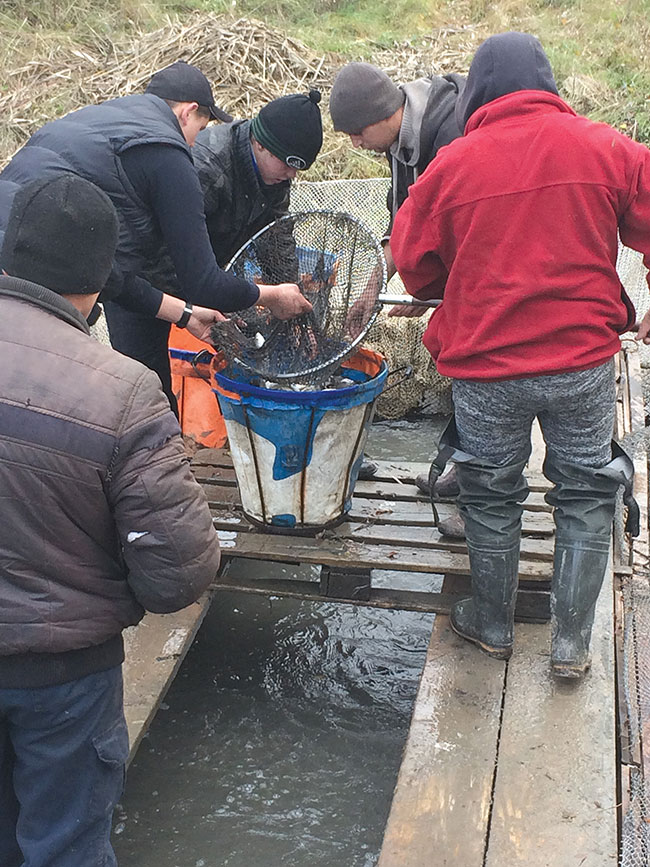
News & Views
Systems management
Kakhovka dam destruction hits the Ukrainian fish farming industry
August 3, 2023 By Hatchery International staff
 Photo: Ukrainian Agricultural Ministry
Photo: Ukrainian Agricultural Ministry At least a dozen fish farms were destroyed as a result of the Kakhovka dam breach on June 6, causing death to thousands of fish and contamination of vast territories, Ukrainian scientists reported. The effect is expected to be long-term as it may take decades and billions of dollars for the ecological situation to recover.
In the Kakhovka area alone, 12 fish companies ceased to exist due to the draining of the water reservoir, estimated Roman Novitsky, head of the aquaculture department of the Dnipro State Agrarian and Economic University. Most of these businesses used to purchase broodstock from local hatcheries to stock the water reservoir and catch fish when it reached commercial size.
The Ukrainian Agricultural Ministry estimated that fish production in the area before the dam breach was nearly 2,000 tonnes per year. The Ukrainian government assumed that it would not be possible to fully revert the situation unless a new dam was built. The Economy Ministry preliminary calculated that the cost of the project could be close to US$1 billion.
Before the catastrophe, the Kakhovka ecosystem consisted of 52 fish species, with five to six of them, produced commercially, the Dnypro University claimed, estimating that even if the work starts now, it would take 25-30 years to rebuild the destroyed ecosystem.
In addition, numerous pond-type farms downstream the Dnipro River were also lost, Novitsky said, adding that the impact was seen with the naked eye in the Maryanskaya village in the Dnipro River, where 28,500 dead crucian carp was discovered on the riverbanks following the flood. Some consequences, however, should come to the fore with a three to six months delay.
Kakhovka water reservoir was feeding large agricultural territories in the south-eastern parts of Ukraine, and now they are expected to suffer.
In addition, the territories affected by the flood are dangerously contaminated, said Vladislav Balinsky, head of the local ecological NGO Green List. Among the substances found in the flooded territories, scientists have already detected salmonella, astrorotavirus infections, and cholera-like vibrios. The regional authorities in the Dnipro and Kherson regions have even banned selling locally grown fish, citing safety concerns.
The long-term impact is also associated with an unprecedented shift in the natural balance of the aquatic environment, Balinsky said.
“Due to the large inflow of water from the Kakhovka reservoir, the sea is desalinated, which negatively affects marine life. Freshwater fish, in turn, is washed away due to large-scale flooding. Some species, like carp, go blind from high levels of salt and lose the ability to navigate. The remains of dead fish will settle and rot, causing new environmental problems,” Balinsky said.
In addition, the water in the Dnipro Riverbank, downstream of the Kakhovka dam, is heavily contaminated with numerous chemicals since the flood also washed out various munitions, in the first place, land mines in substantial quantities.
Over the past years, the Ukrainian government subsidized fish stocking in the Dnipro River under a contract with a group of hatcheries across the country. This work is expected to be suspended for the time being.
Print this page
Advertisement
- Portable system to democratize sustainable aquafarming in the Philippines
- BioMar further invests in Larviva hatchery feed





